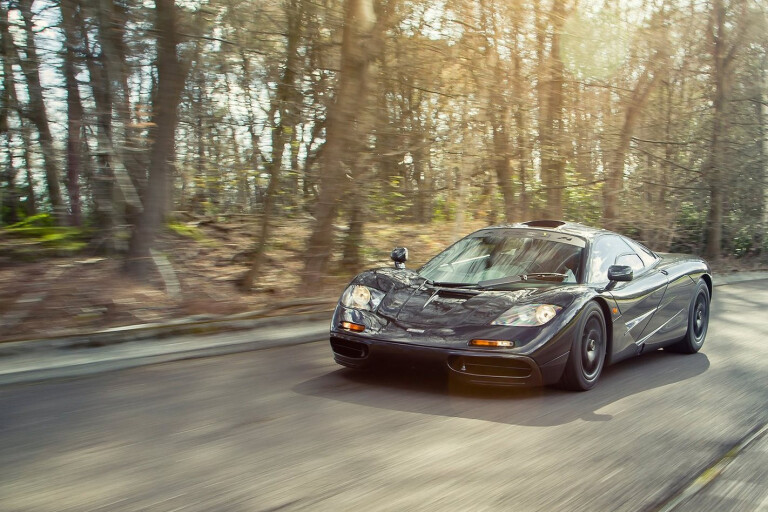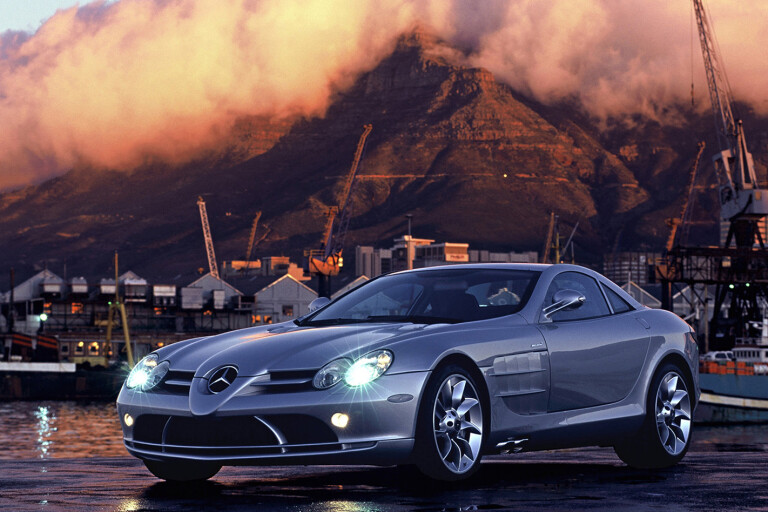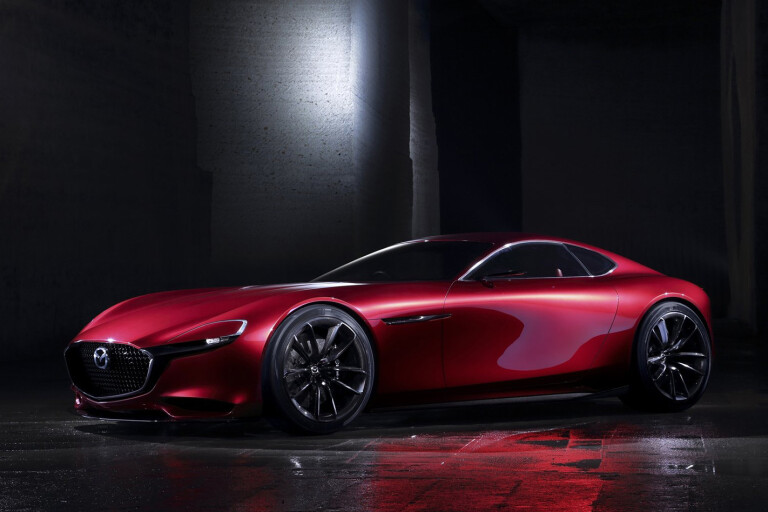
One thing the Geneva motor show proved to us in spades this year is that the spectrum of supercars is blossoming.
Aston Martin, Pininfarina, Bugatti, Ferrari, GFG Style, Koenigsegg, Lamborghini, Ginetta, Rimac… the list of hyper-capable machinery from some of the world’s most respected, and some of the newest, car makers was somehow able to overshadow the evergreen SUV for breadth. And absolving itself from the supposed death of the supercar as we know it, electrification has also proved it will shine as the saviour of legends.
Beyond the Swiss show’s walls are plans to resurrect fabled nameplates, with some of the most evocative supercars to ever grace a showroom preparing to roam on roads once again.

Uncovered this week is that Mercedes-Benz has registered its SLR trademark well ahead of the United States Patent and Trademark Office deadline. Previously a product of the unlikely F1 partnership between the three pointed star and McLaren, the SLR McLaren was a grand tourer of epic performance. In its 2003 debut, the “Sport Leicht Rennsport” (Sport Light Racing) McLaren produced 460kW and 780Nm from a supercharged 5.7-litre V8 engine. It was later wicked up to develop 485kW in the limited Stirling Moss edition.
Ending production in 2010, Benz focused on its new F1 partnership with Brawn GP, and the SLR has since been a respected retiree. But it seems the model may get the green light once more, without involvement from McLaren, and as a milder, more attainable supercar to sit underneath the Project One. The idea of the resurrection comes at a time that the four-year-old Mercedes-AMG GT is approaching renewal and the Affalterbach tuner finishes development of its new ’73 Series’ engine, a hybrid version of the ubiquitous 4.0-litre twin-turbo mill but producing heftier outputs near 600kW and 1000Nm. Hybrid SLR, anyone?
Before McLaren’s involvement, being the responsible party for major changes like relocating the engine back from the bumper 1000mm and 50mm behind the front axle, the British outfit had proved its road car prowess with the stunning McLaren F1. Produced for five years from 1993, the unique three-seater held the record for fastest production road car until 2005. The brainchild of the father of McLaren Cars, Gordon Murray, the F1 was a relative featherweight with devastating power, developed from a BMW-built 6.1-litre V12 engine. To this day, it remains the fastest naturally-aspirated production road car, though that record might be broken, with what could be the only reborn legend to return with a faithful combustion powertrain.
According to Murray, the original formula is one which has not been replicated, and the F1 genius has plans to deliver the first true successor under his new IGM car brand.
"I truly believe nobody has done another McLaren F1 since the F1," Murray told US publication Road & Track last week at the Geneva motor show, where McLaren unveiled its three-seat Speedtail in the metal.
"And that's because it was such a single-person focused design, lightweight, [focused] on driver feedback and feel, the V12 sound, the feedback in the steering... and the attention to the detail of the engineering.
"It's not a criticism that nobody's done that, but if you're making 700 LaFerraris, you can't do that. You have to use production bits. So, I thought it was about time somebody did another McLaren F1,” Murray explained.
"The only place to drive a supercar really is in the middle, particularly on a narrow, windy road. You can place the car so accurately.
"Nowadays, when somebody announces a new supercar and it's 3300 pounds (1500 kilos), they get applauded, which I find unbelievable. This car [the upcoming IGM] is under 2200 pounds (1000 kilos)."
A carbonfibre monocoque featherweight, Murray’s vision is set to materialise in 2020. But it won’t be the only supercar to come out of Britain in the next few years.

Jaguar is developing a new mid-engine cat, codenamed J-Type, which will be a successor to the early ‘90s XJ220 and is based on the 2010 C-X75 concept. Like the XJ220 – the fastest production car until McLaren unleashed its F1 – the J-Type will use a mid-engine V6, this time augmented by electric-hybrid power to all four wheels.

It may even be available as a roadster sometime after its 2022 debut, like the successor to the Porsche 918 Spyder – yet another revival that will arrive at earliest by 2025, at least ten years after the original V8 hybrid stopped production. Confirmed to Wheels at the Swiss show, it will be fully-electric, using solid state batteries that don’t yet exist in a production vehicle.
As we walk down the cherry blossom-lined path of the Japanese, it is a similar progression - the new Toyota Supra excepted - with the rarefied second-generation Honda NSX re-imagined over ten years after the original ceased production and, while dragging its feet to arrive, the next Mazda RX which has an all-new hybrid rotary Skyactiv-R drivetrain in the pipeline.

So while we rightly bemoan the dwindling supply of screaming, naturally-aspirated supercars, the bright spark of electricity means we will enjoy a whole new era of legends all over again.

COMMENTS